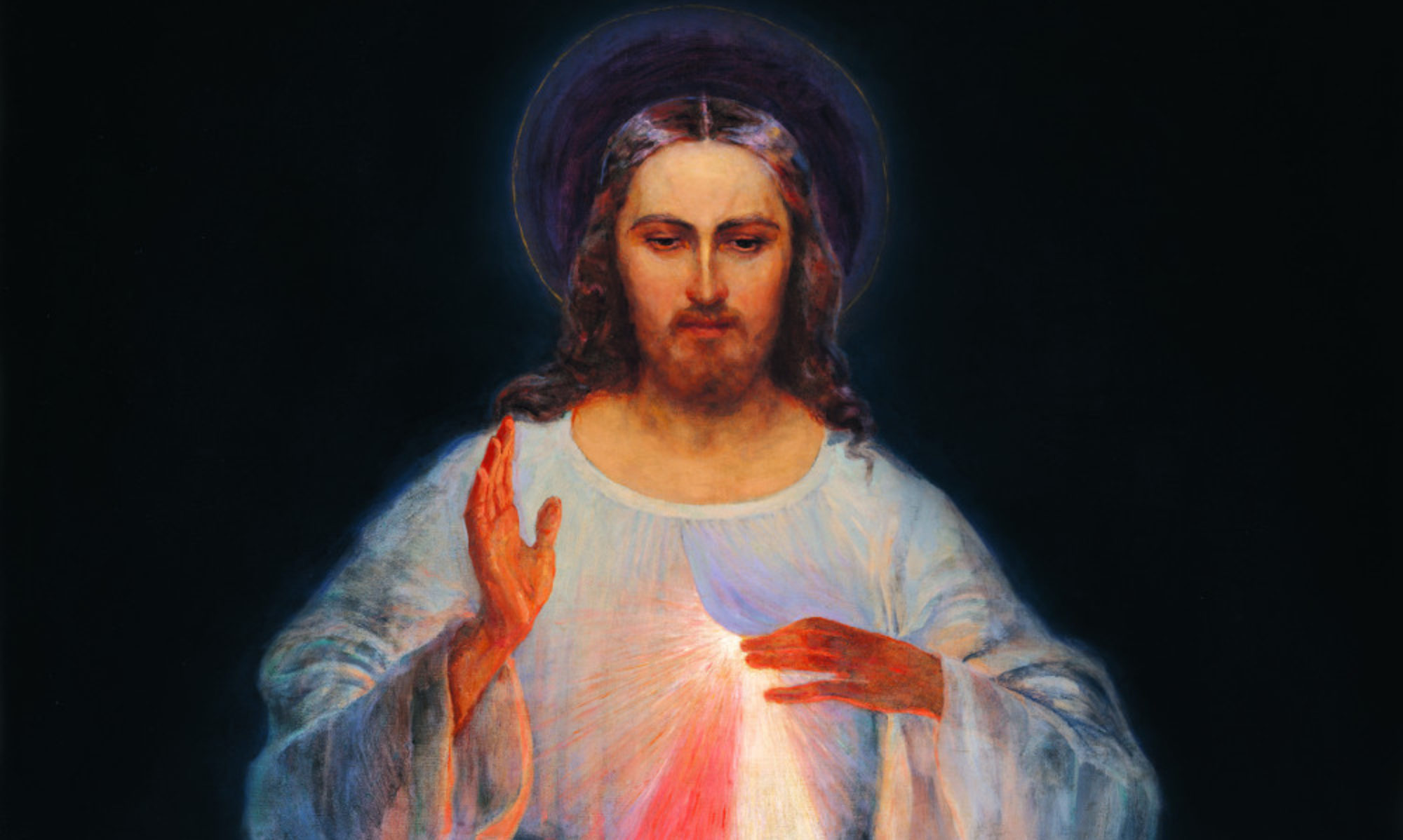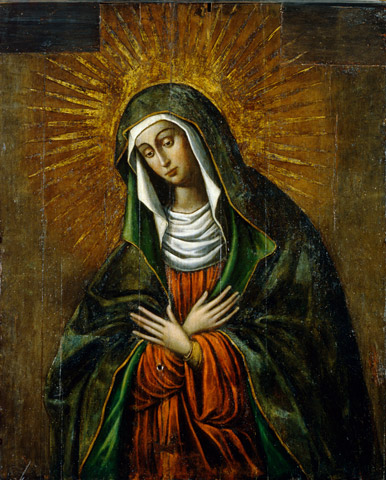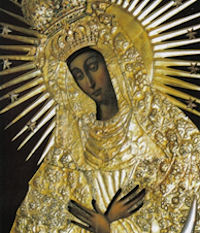
Oil painting on boards 
The picture in silver dress
Our main patron is Mary invoked with the title of “Mother of Mercy”. Her feast is celebrated on November 16th.
The icon of the Gate of Dawn Madonna was painted probably in Vilnius in the period 1620-1630. Despite numerous investigations, the painter has remained unknown. The painting sized 200x165cm is oil on oak boards covered with a thin chalky primer. The double crowns and the gilded silver dress were placed on the painting at the turn of the 17th and 18th centuries. A distinctive feature of the picture is a votive offering in the form of a crescent moon, placed at the bottom of the painting in 1849. The silver lining of the chapel walls, where the painting of the Holy Mother of Mercy is displayed, is made up of selected votive offerings. The votive offerings covering the walls include those sent by Holy Father, St. John Paul II. The number of exposed silver votive offerings donated by the faithful in gratitude for the graces obtained is estimated at approximately 8000.
In the chapel, the residents of Vilnius have prayed for generations for special graces for themselves and their families through the intercession of the Mother of God. Numerous replicas of the icon of the Holy Mother of Mercy are displayed in churches in other countries, including the Basilica of St. Peter and Paul where a replica of the image is displayed in a chapel. In 1773, Pope Clement XVI granted indulgences to the Fraternity of the Guardianship of the Blessed Virgin Mary in Vilnius. By the Pope’s decree of 1927, the painting of the Madonna in the Gate of Dawn chapel was given the name of the Icon of the Holy Mother of Mercy and was crowned with papal crowns. The coronation ceremony became an important national and religious event – the image was crowned by the papal nuncio (the crowns went missing during the World War II).
Thanks to Divine Providence, a few years later (in 1935), the painting of the image of the Merciful Jesus was venerated for the first time in public next to the Icon of the Holy Mother of Mercy. During World War II, by the decision of the Metropolitan Archbishop of Vilnius Romuald Jałbrzykowski, the Icon of the Holy Mother of Mercy was left with the faithful worshippers in the Gate of Dawn. After the war, when Vilnius was annexed into the Soviet Union and most of the churches in Lithuania were closed, the Gate of Dawn chapel remained open.
The Holy Mother of Mercy as a motive to believe
“For us, Mary is a Mother of Mercy, and her testimony of mercy began at Calvary. Since then, grace has streamed on people through the intercession of Mary: she strengthened the Disciples in their work; she obtained inspiration for the Evangelists. And particularly, after she was assumed to Heaven, she looks after us and obtains the Divine Mercy for us even more.
Father M. Sopoćko
Maybe we recognize the numerous sins in our lives; maybe somebody sank into sin – Mary obtained for him the grace of conversion. How many times this was repeated, will remain a secret known only to God, but if many times – then we became the subject of special endeavours of our Mother of Mercy. She was the one who put in our mouths the words: JESUS, I TRUST IN YOU and postponed the moment of eternal and horrendous punishment.
Surely everything comes from the Merciful Jesus, but all the graces we are granted come to us through Mary. (…). This has been proven by numerous, wonderful places where, through the intercession of the Virgin Mary, people are cured from illnesses, comforted in sorrows and receive hope in despair. It was not a coincidence that the picture of the Most Merciful Saviour, enjoying worship and granting graces all over the world, was originally displayed at the foot of the Holy Mother of Mercy (April 28, 1935) on Low Sunday – one might say for her to approve and recommend it. Therefore, let us strengthen our ties with Mary, Mother of Mercy and trust her boundlessly”


